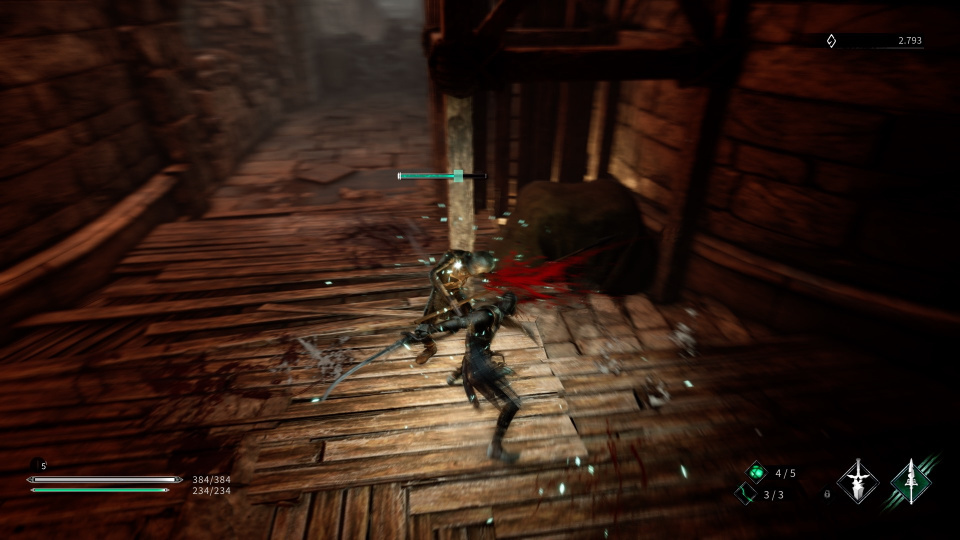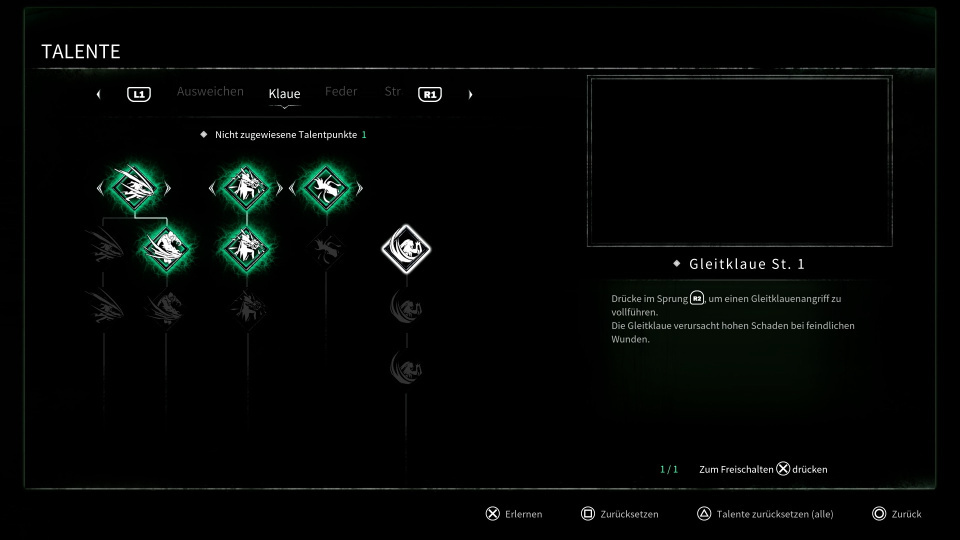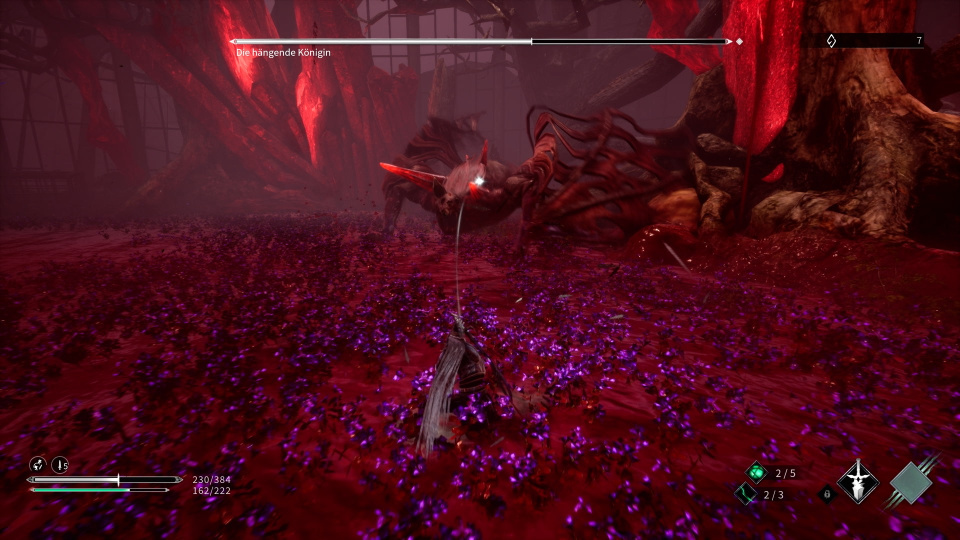Thymesia test | GamersGlobal.de
teasers
Soulslikes are often based on Dark Souls. But the Taiwanese Overborder Studios instead take Bloodborne as a role model – and thanks to their own ideas create a strong debut.
 |
All screenshots and video scenes are from GamersGlobal
At least with the first Dark Souls From Software has catapulted itself into the Olympus of video games. Because no matter how you feel about the Japanese studio’s action role-playing games, you just can’t deny the immense success and overall quality of the titles. Hidetaka Miyazaki and his team have created, or at least popularized, a new phenomenon, its own subgenre, even named after their games: soulslikes.
With Elden ring (in the test) the team has probably landed its biggest success so far this year. A few weeks after the release, over 12 million units of the open-world game were sold, which was made with the participation of George RR Martin has arisen. But if you can believe the author of these lines (which you definitely should), then another title is the real crown of the From-Software creation. A game so good that even the questionable technical condition is quickly forgotten in view of the genius. Combat system, game world, lore, setting, bosses, everything fits together. Of course we can only talk about Bloodborne (in the test, grade: 9.0).
With great success come great imitators. In the past there have already been numerous emulators who used the Soulslike formula. Sometimes more, sometimes less successful. And even if they always bring their own elements, the actual source of inspiration is always pretty clearly Dark Souls. Bloodborne, on the other hand, is probably only rarely taken as a role model. Probably out of reverence for the ingenious template. With Thymesia, the young Taiwanese studio Overborder has finally released their debut, which is based on the PS4 exclusive title from 2015. However, it mixes elements of Sekiro-Shadows Die Twice (in the test, grade: 8.5) into the combat system and also has a few peculiarities apart from that. Let me put it this way: Despite some annoyances, I was pleasantly surprised…
 |
| The colored part in the life bar indicates that the opponent is wounded. Now you have to follow up with the claw. |
Fast, merciless combat
Unlike the broader competition, there aren’t really any additional weapons in Thymesia. You strike with the saber, draining health and inflicting wounds on your enemies – indicated by a colored area on the health bar. If you take your time and don’t keep hitting it, the wounds will heal and enemies will regenerate to some extent.
In order to close the wounds, you have to attack with your claw. It has another function, but I’ll get to that later. With one of three thrown feathers you can further stop the healing, these also regenerate over time. In addition to attacks with saber and claw, you can fend off enemy attacks with the right timing and deal direct damage to your opponent.
Of course, you can also do quick dodge dashes to avoid attacks. There is no shield, another similarity with Bloodborne. The fights are fast, merciless and require quite a bit of practice. But it’s all the more awesome when you parry all the attacks of a boss as if it were nothing and then attack him with saber, claw and disease weapons. By the way, there is no endurance like in the prototype.
Wait, plague weapons? Now what is that again? One of Thymesia’s special mechanics. A charged claw attack grants you a kind of spectral version of an opponent’s weapon. After one use, however, she is gone again. Later in the game, you can also permanently carry one or even two plague weapons, which require energy to be used. To unlock them at all, you collect fragments in the world and from defeated enemies. You can also level them up further so that they deal more damage or cost less energy.
 |
| You can choose from a variety of talents. |
Build your own Corvus
In general, Thymesia gives you many options to adapt the Corvus character to your playstyle. With Memory Shards, the counterpart to Souls, you level up one of three values: Strength, Vitality and Disease. They each improve your saber damage, your life energy or your claw damage.
With each level up, you also get a talent point that you can spend in one of the six talent trees. Even more damage for Saber or Claw, a higher parry window, bonuses on perfect dodges and much more is possible. Just experimenting is a lot of fun, because you can redistribute the talents at any time. Potions work like in other genre colleagues, you have a limited number that is filled up every time you rest on a soul throne – here you also level up and after a break all opponents are back at the start.
However, the lifeblood can be further enhanced with alchemy boosters. More bottles, stronger healing or new slots to use herbs beckon for the resource you get from mid-bosses. Herbs further enhance healing or protect against greater damage. You know that similarly from the bottle of the wondrous medicine from Elden Ring.
 |
| Bosses are few in Thymesia, and designs vary in quality. |
Good levels, few bosses
When it comes to the basic structure of the game, however, Thymesia was neither inspired by From Software’s current super hit nor by Bloodborne. You replay the memories of Corvus, each of which is a separate level. It’s more reminiscent of Demon’s Souls, even if just four memories are a bit thin, especially since one of them is just a boss fight. Between the trips to the past, you stay in the philosopher’s hill, which is the hub world, where you can chat with Aisemy.
However, the story of Thymesia left me pretty cold. A plague is raging in the kingdom of Hermes, something with blood, not much else has stuck. There are virtually no cutscenes, only found documents tell tiny fragments. Here it becomes clear how much stronger From Software is on this point.
The developers also fall behind the big role model when it comes to the general level structure. The sections are structured sensibly and always let you find your way and there are even some useful shortcuts. But they’re just not as awesome and absorbing as the game world of Bloodborne. Sure, the comparison is a bit lame, but you can just tell Thymesia’s indie origins.
The lack of bosses is also a pity. They’re waiting for you at the end of each level, that’s not much. The designs are not super-spectacular either, but the fights score with gripping music and the fast, demanding process as well as several phases. However, attacks that are almost impossible to avoid are always ugly.
Author: Dennis Hilla (GamersGlobal)

Opinion: Dennis Hilla
It’s no secret that Bloodborne is one of the best video games of all time for me. I was correspondingly hot on Thymesia, because Soulslikes mostly go in the direction of Dark Souls. Overborder Studio didn’t disappoint either, I had a really fun six hours with the debut – despite various small weaknesses.
This is not least due to the extremely fast and demanding combat system that, thanks to the wound mechanics, constantly encourages you to stay close to the opponent and not miss any chances. While it’s not perfect thanks to minor imperfections and the occasional collision detection issue, it’s a lot of fun, and the customization options available through the talents really add value to the overall system. Every little mistake is punished, but the whole thing is never unfair. If I had to sum up the mechanics in one sentence, I would probably say: Sekiro meets Bloodborne. Not the worst approach.
However, I would have wished for more budget for the developers in some places. The strong ideas for the game world and story flash up again and again, but ultimately could not be implemented properly. There really isn’t any really exciting collectible stuff. And for a Soulslike there is just too much of a bombastic boss fight, which is okay in Thymesia, but somehow nothing more. Despite all the nagging, I have to say that I was pretty much tied to the controller for about six hours. This may be a bit short on game time, but it’s perfect as a quick bite in between. The side quests that you can tackle after completing an area are also a nice bonus. If you’re looking for new souslike fodder or a decent challenge, you can’t go wrong. But be warned, death is a constant companion.
Thymesia
Entry/operation
- Useful controller assignment
- Useful tutorials that can be read at any time
- No useful fast travel
Game Depth/Balance
- Fast, challenging combat system
- Lots of customization options for your character
- Altogether successful level construction
- Talents help with individual weaknesses like poor parry timing
- Lots of shortcuts and optional steps
- Side quests provide additional game time
- Bosses with their own mechanics and multiple phases
- Talents can be redistributed at any time
- Rest points distributed fairly
- Story at most a minor matter
- Extremely steep learning curve
- Game balance not always perfect
- Side quests are ultimately just stretching the playing time
- Playing time relatively short (6-8 hours without side quests)
- Too few bosses
Graphics/Technology
- Mostly smooth 60 frames per second
- Overall very cool art style
- Short loading times (PS5)
- Level of detail could be higher
- Collision detection not always ideal
- Occasional reload stutters
Sound/Speech
- Gripping boss fight music
- Helpful and appropriate sound effects
- No voice output
- Music in the levels rather meaningless
multiplayer
Unavailable
7.0
microtransactions
–
hardware info
- Mouse keyboard
- gamepad
- steering wheel
- Other
- Oculus Rift
- HTC Vive
- PlayStation VR
- Other
- Steam
- Copy protection-free GoG version
- Epic Games Store
- uPlay
- Origin
- Manufacturer Account Connection
- Constant internet connection
- Internet connection at startup
Reference-www.gamersglobal.de